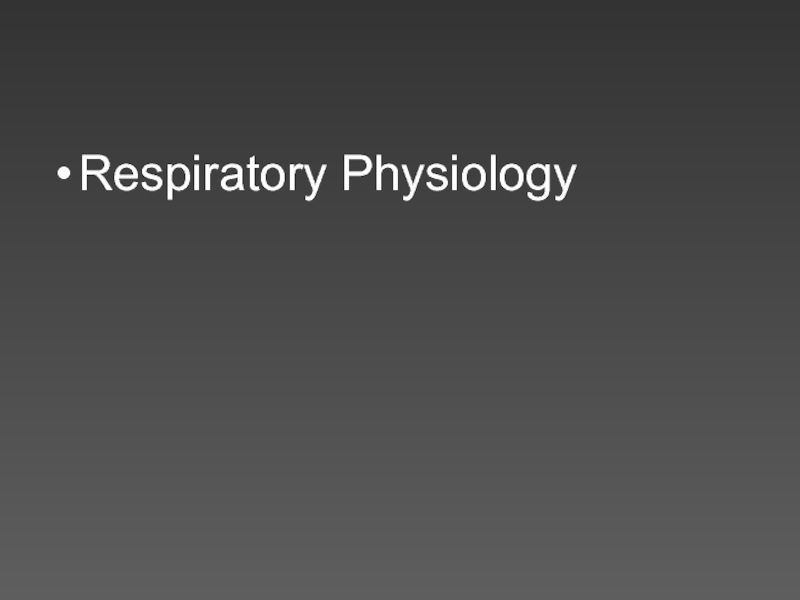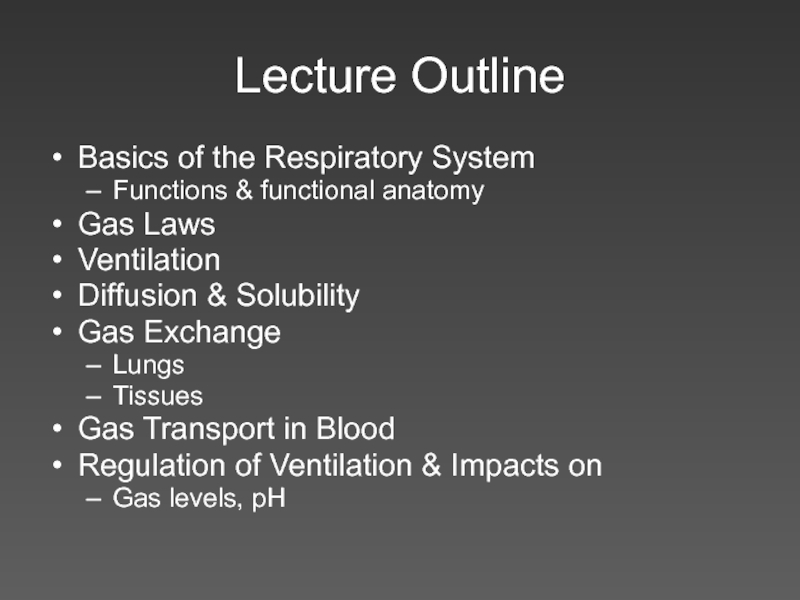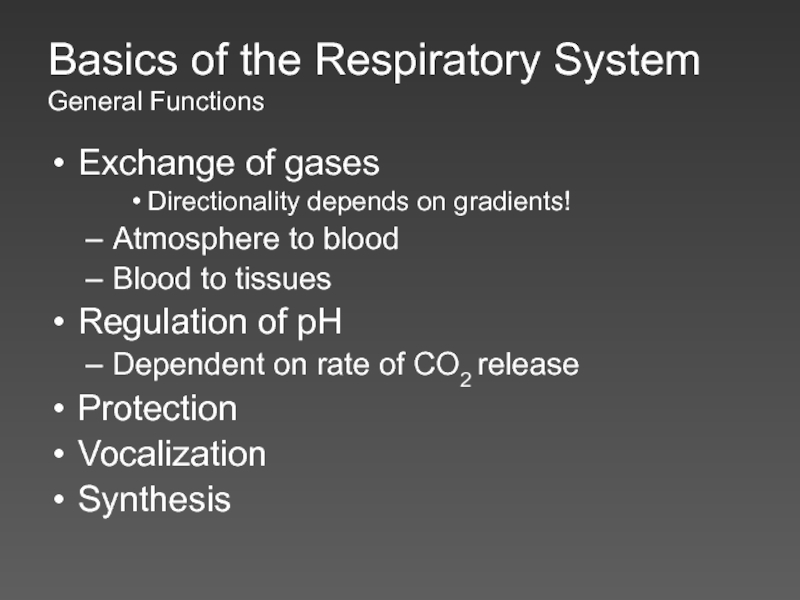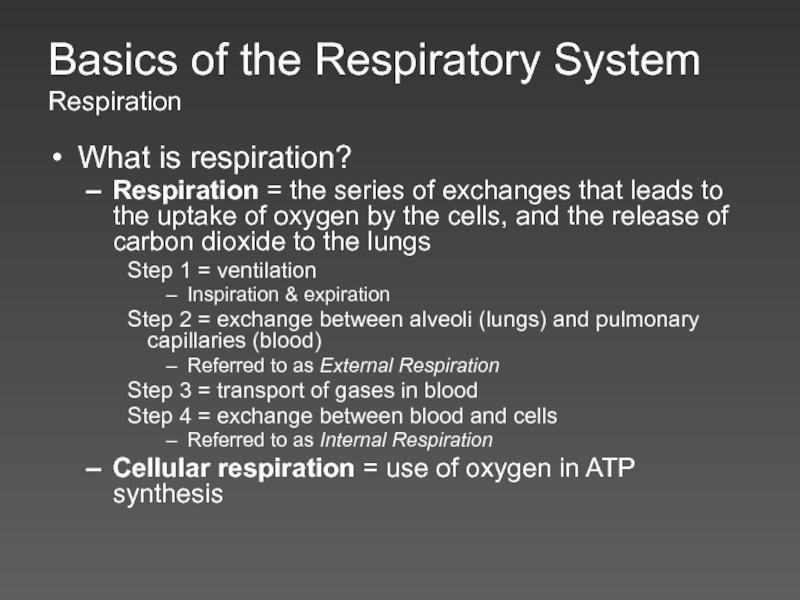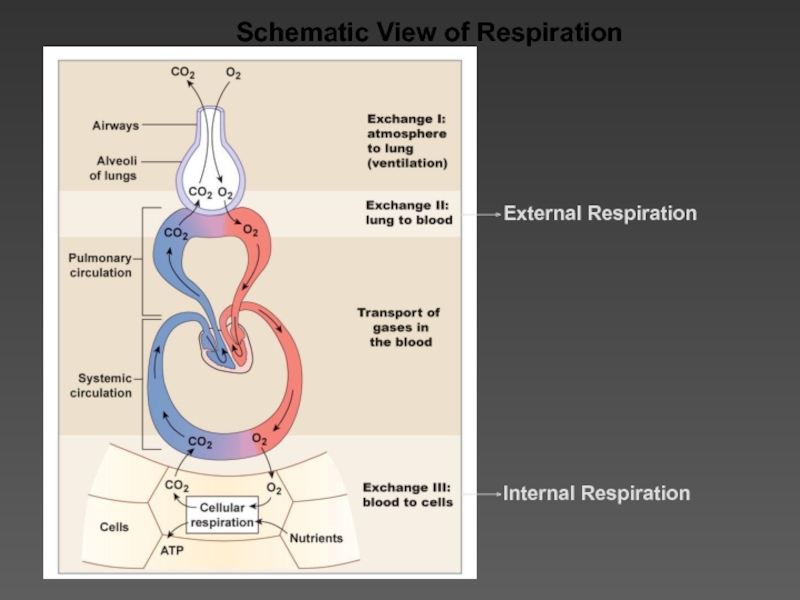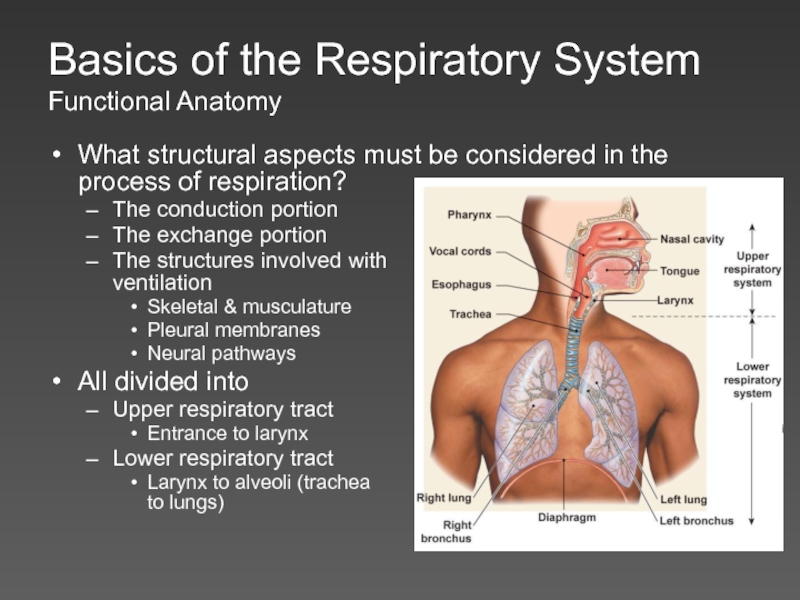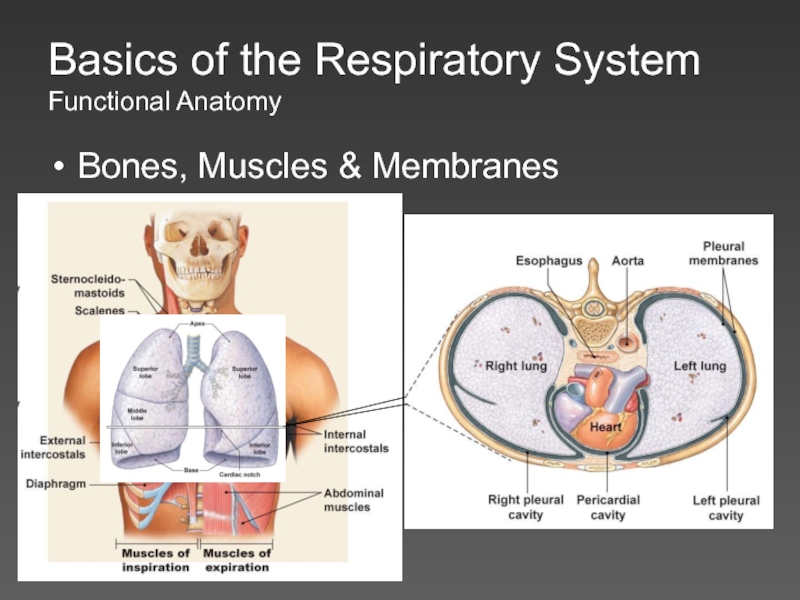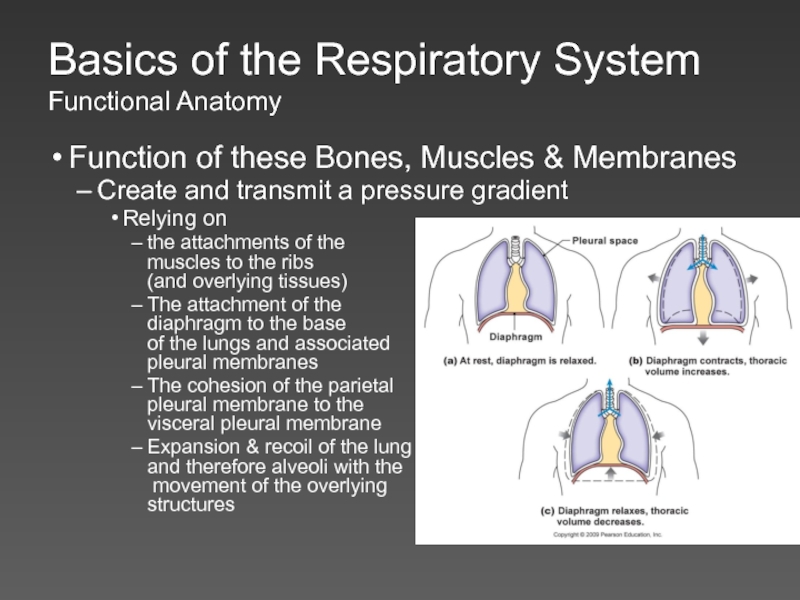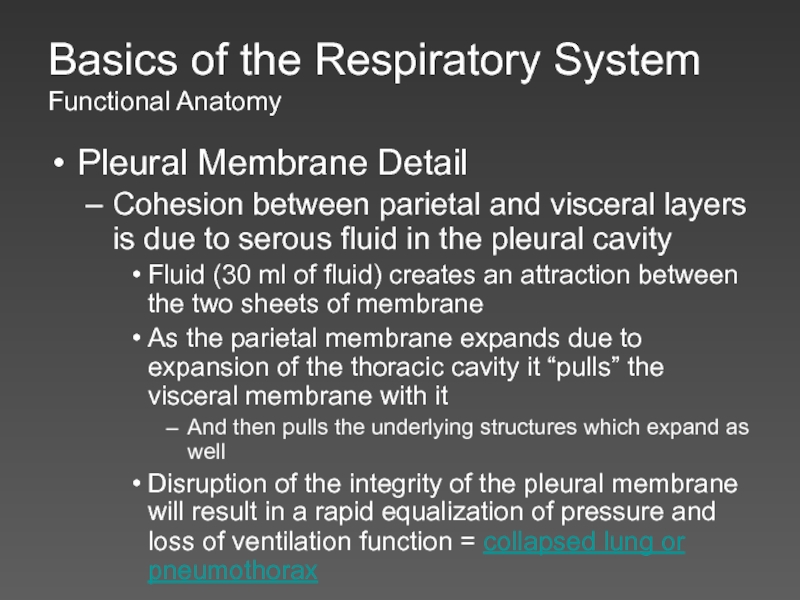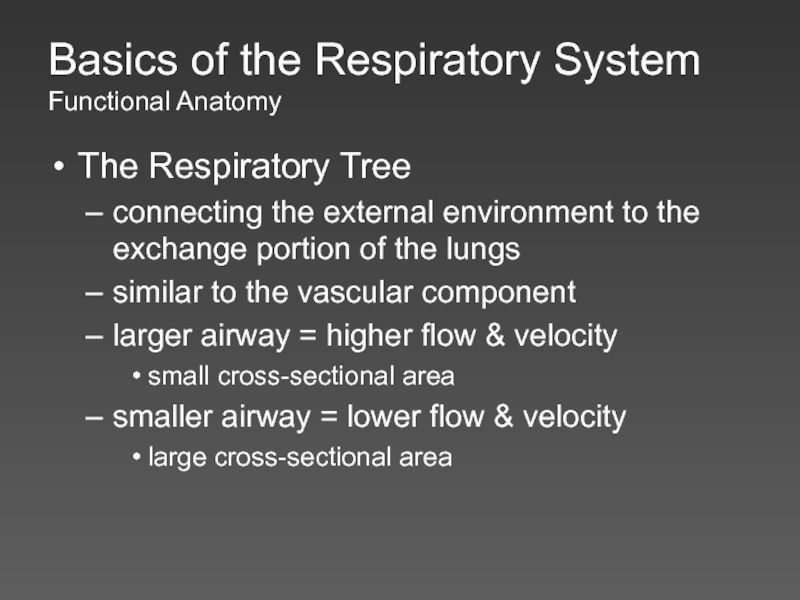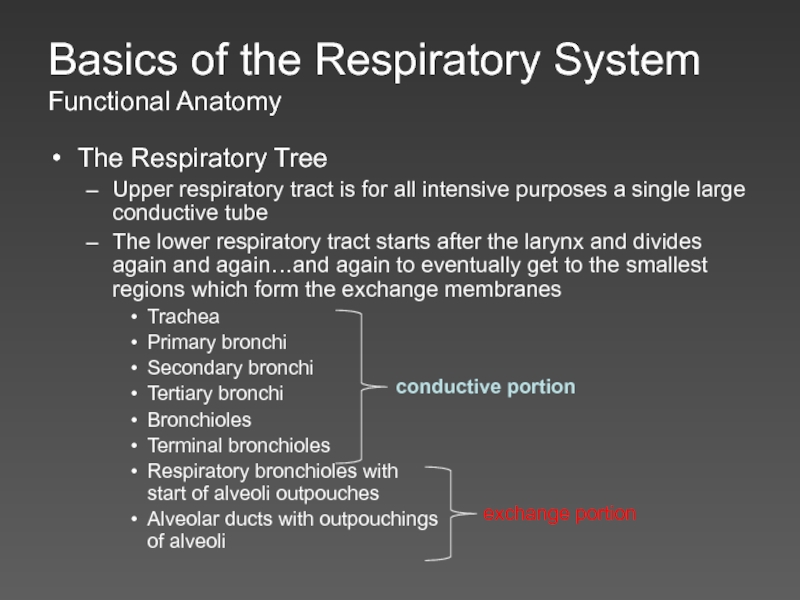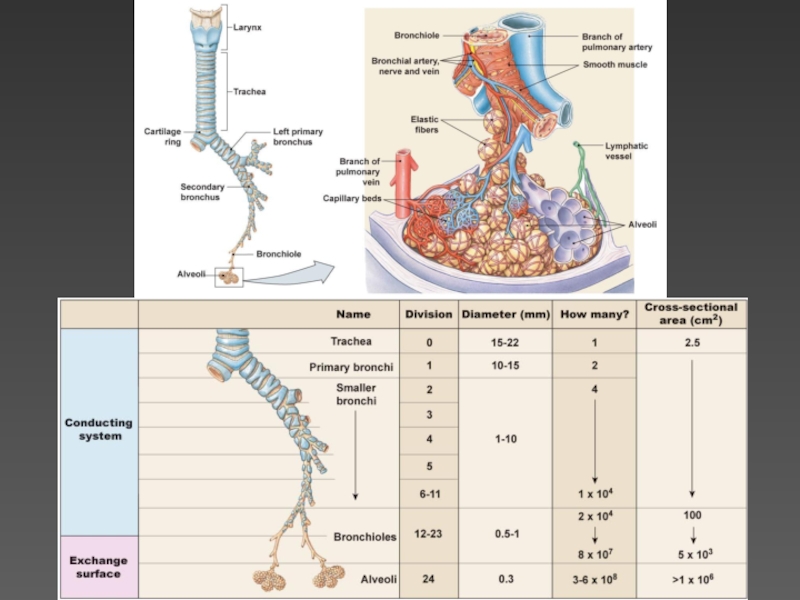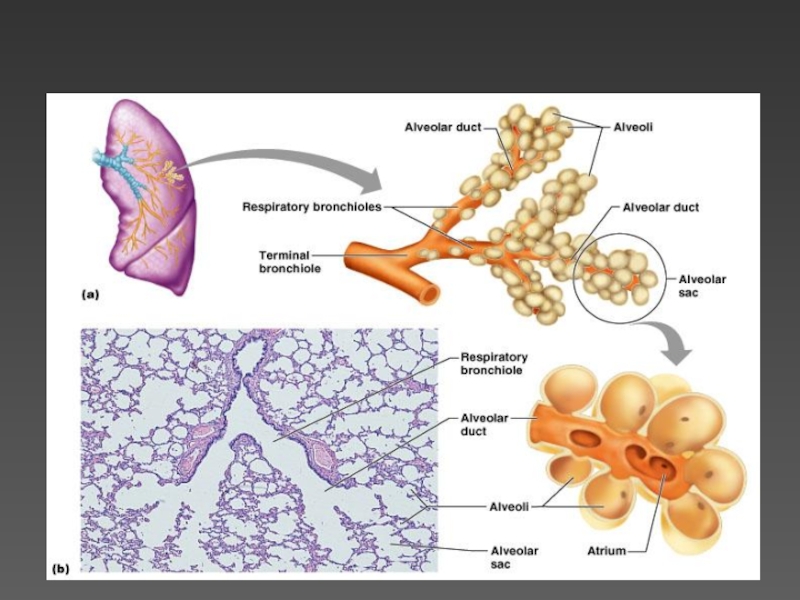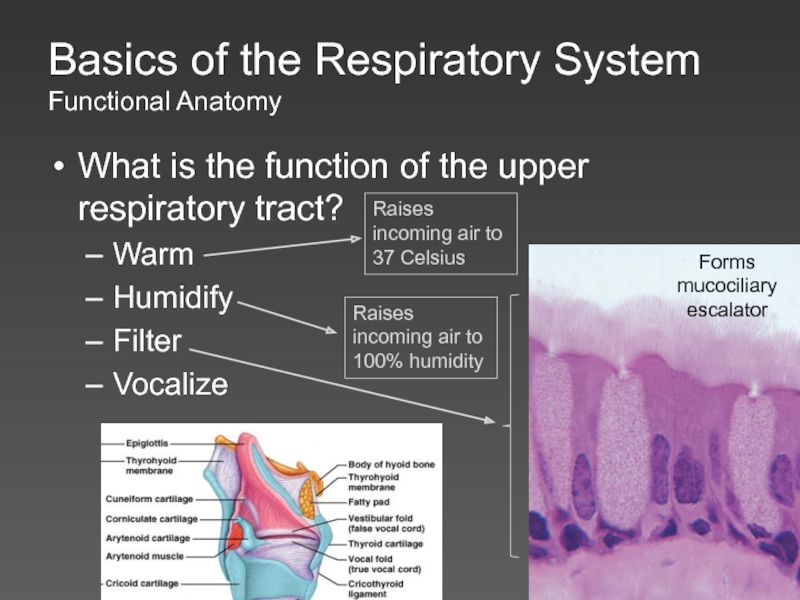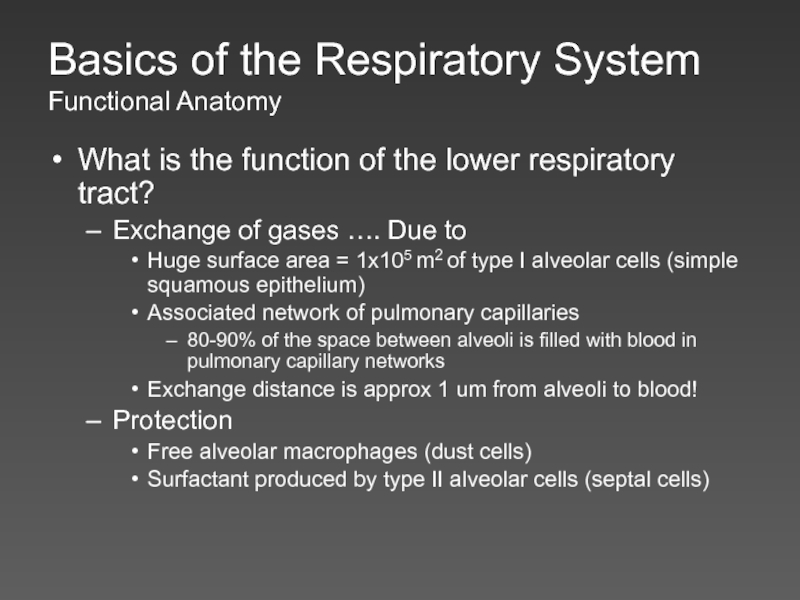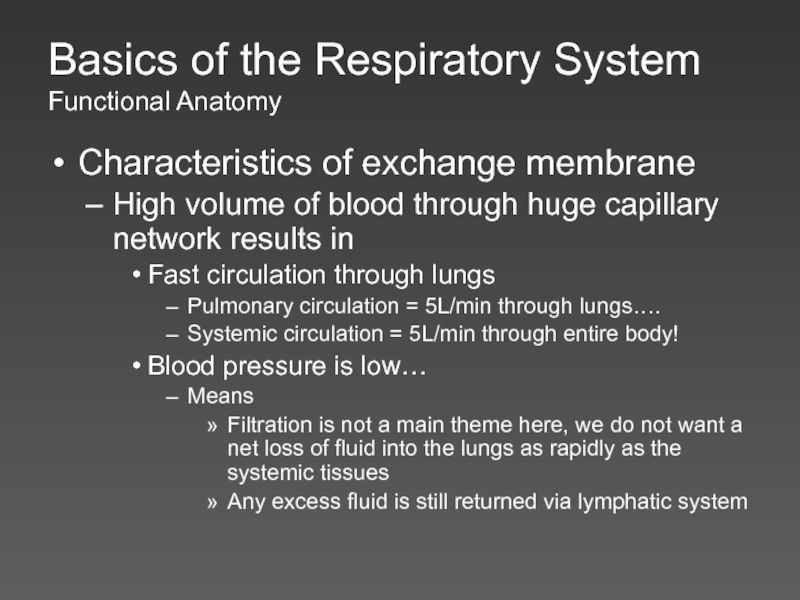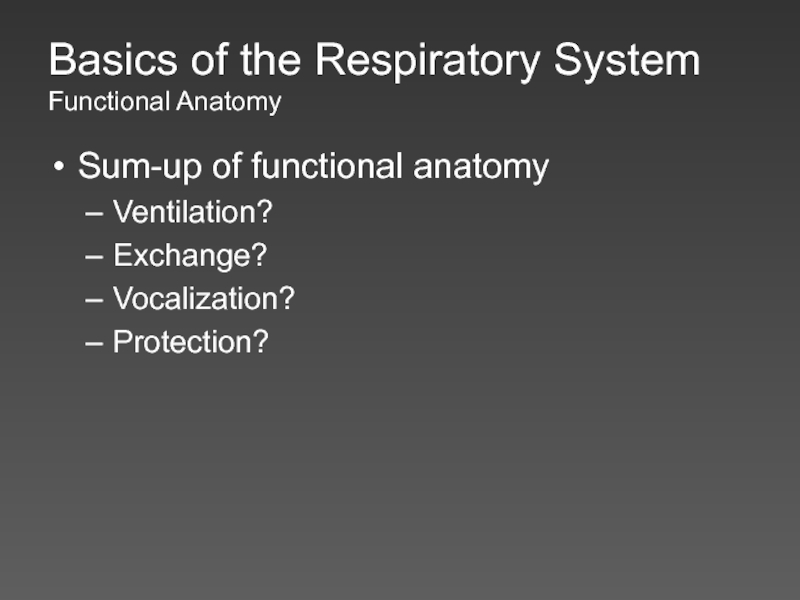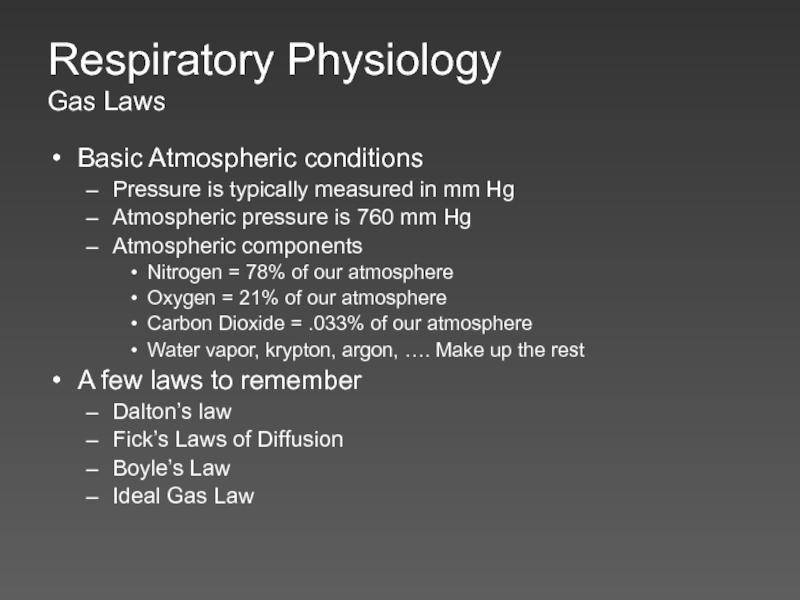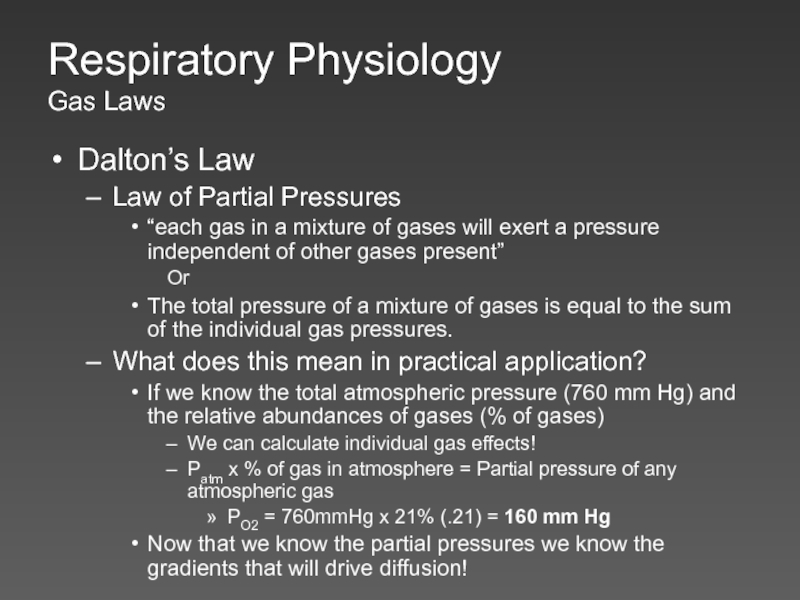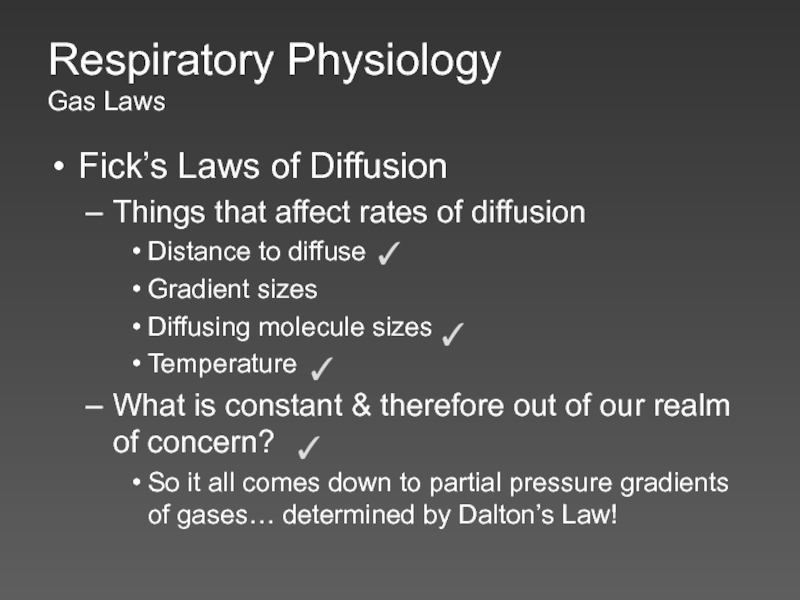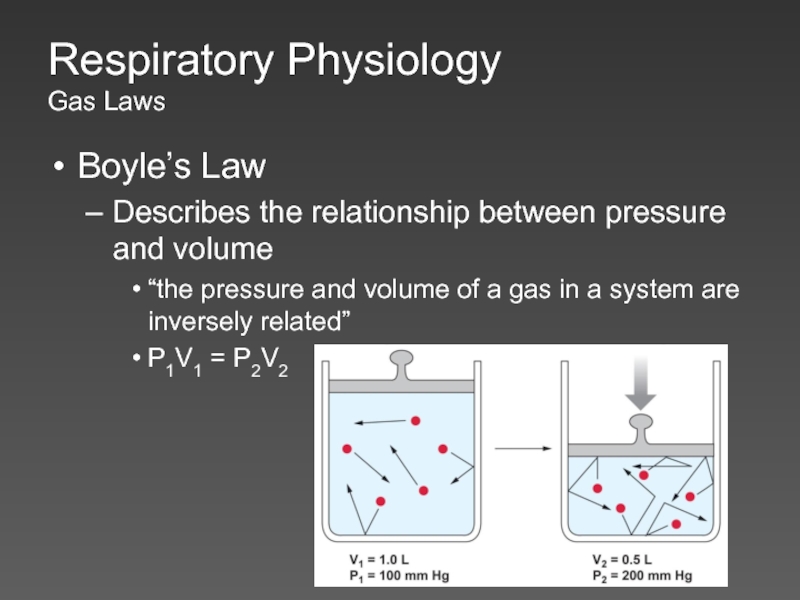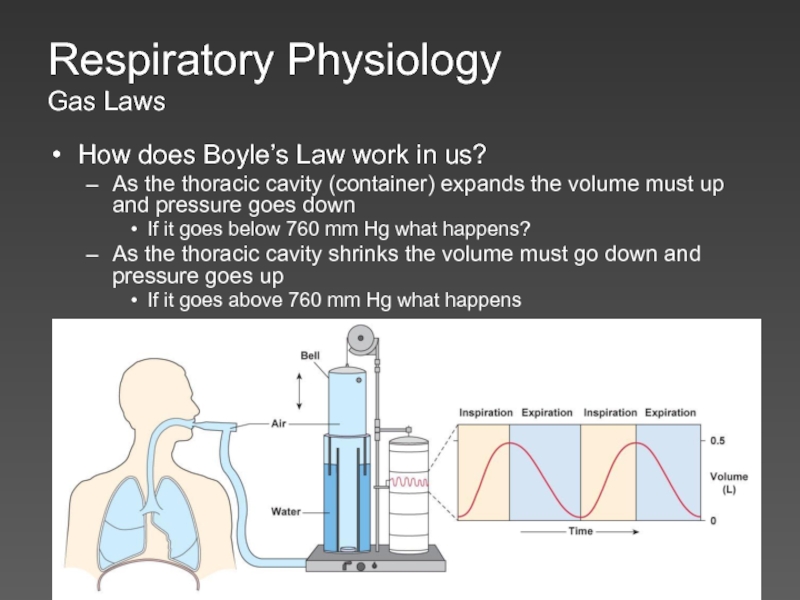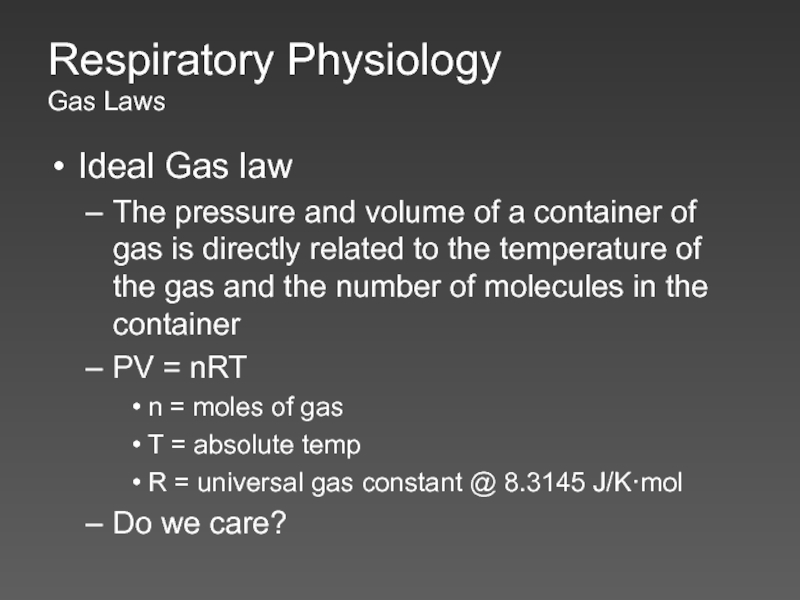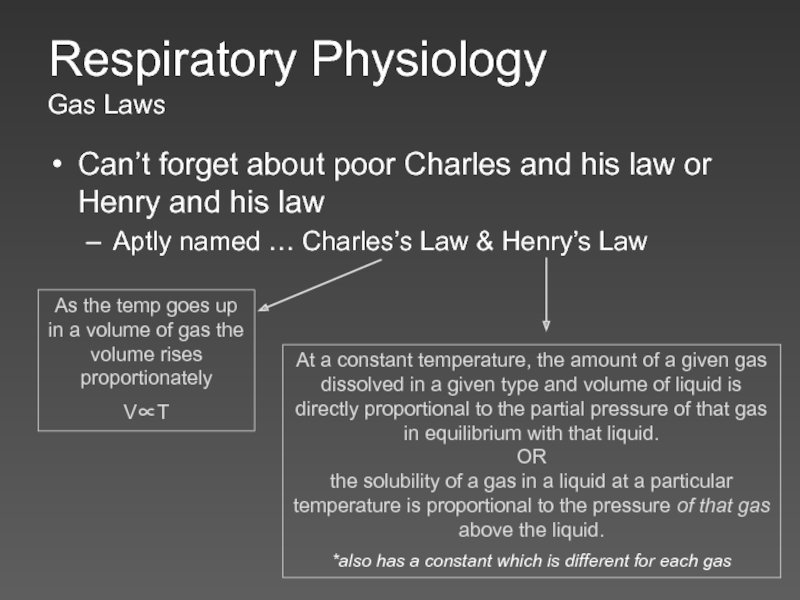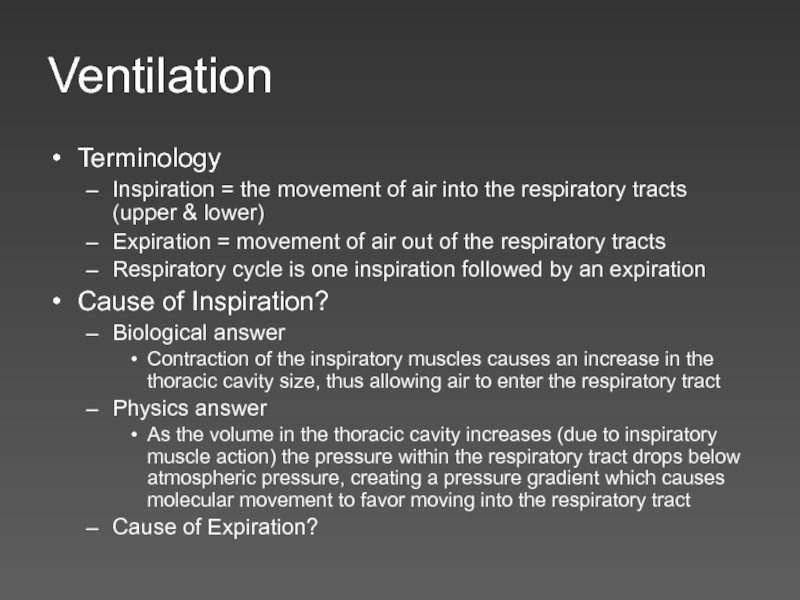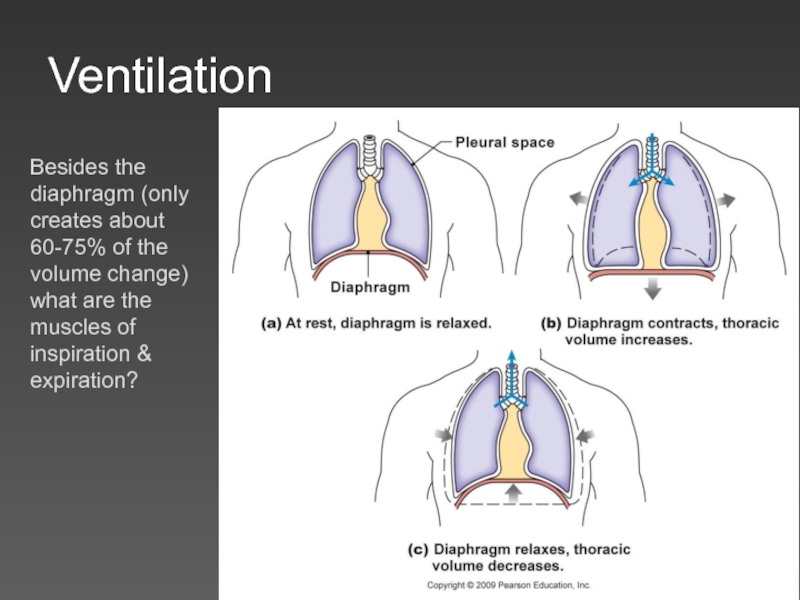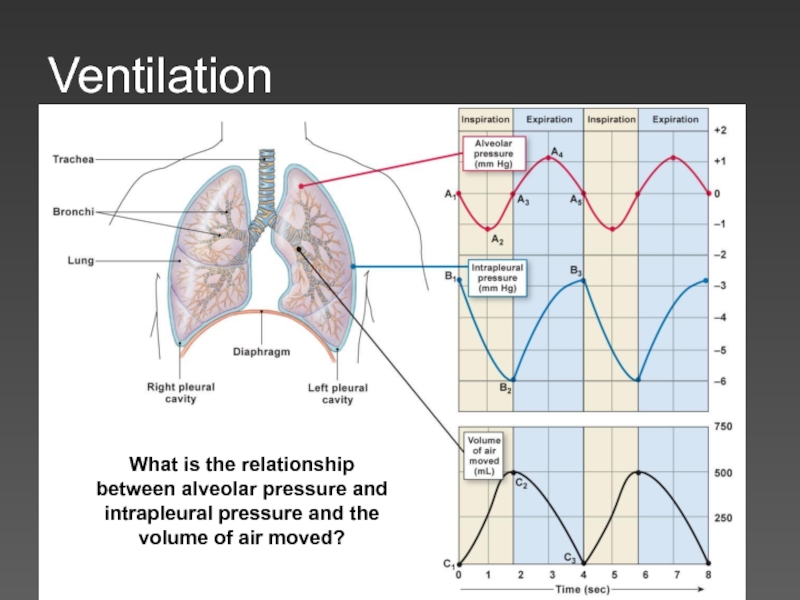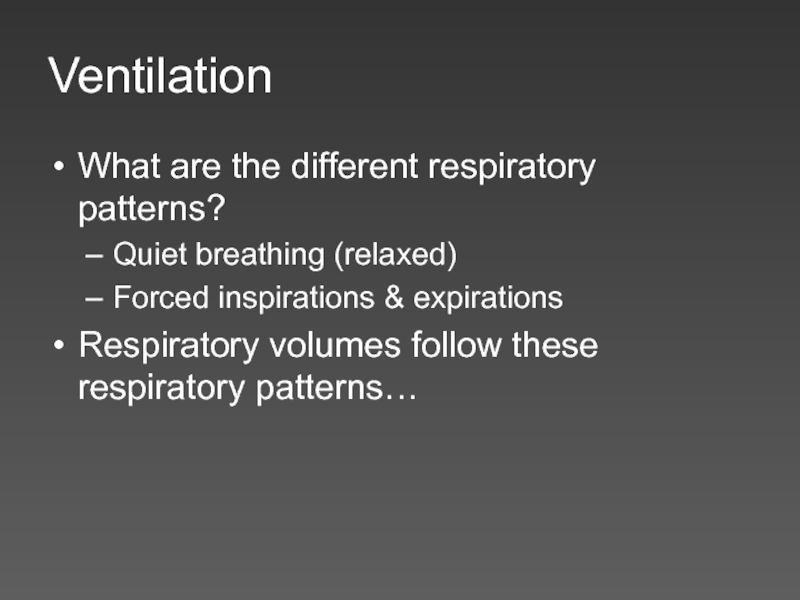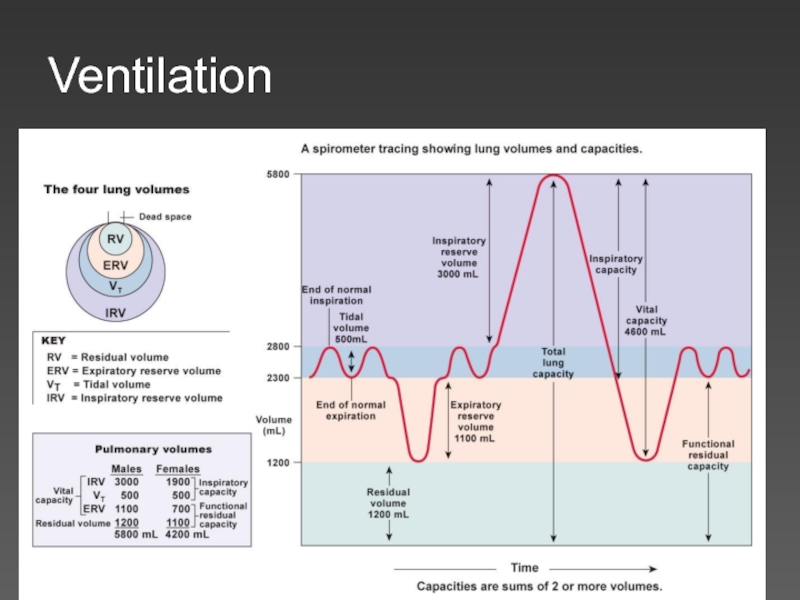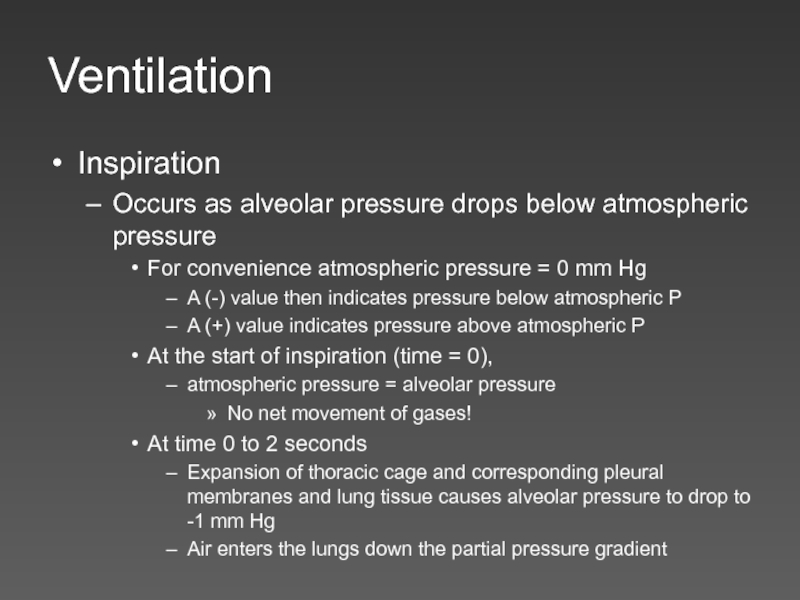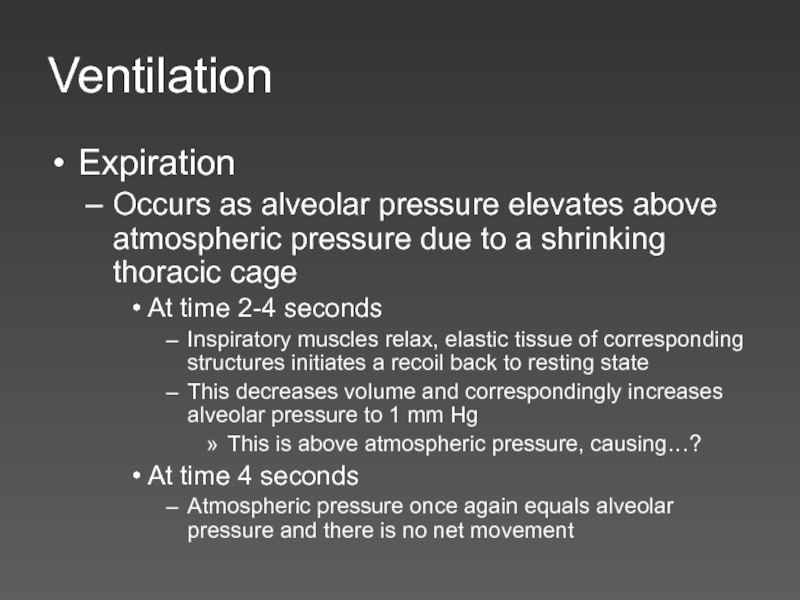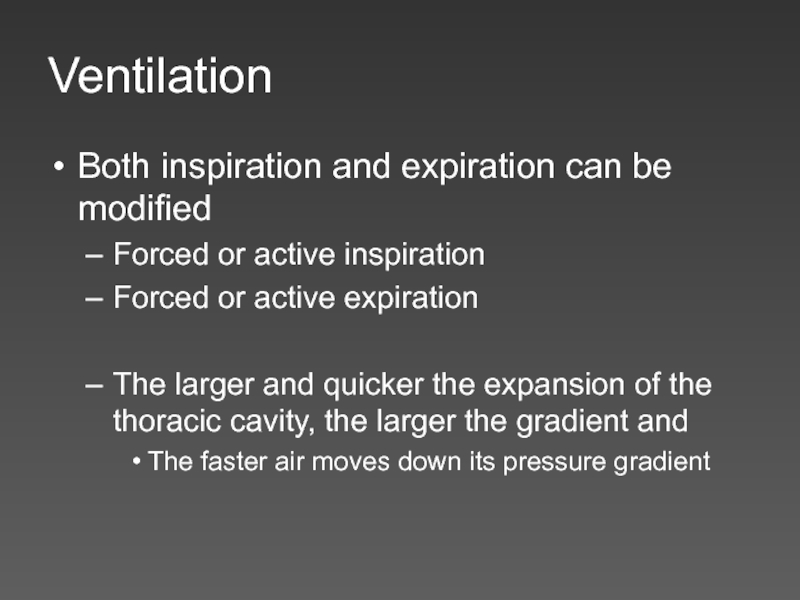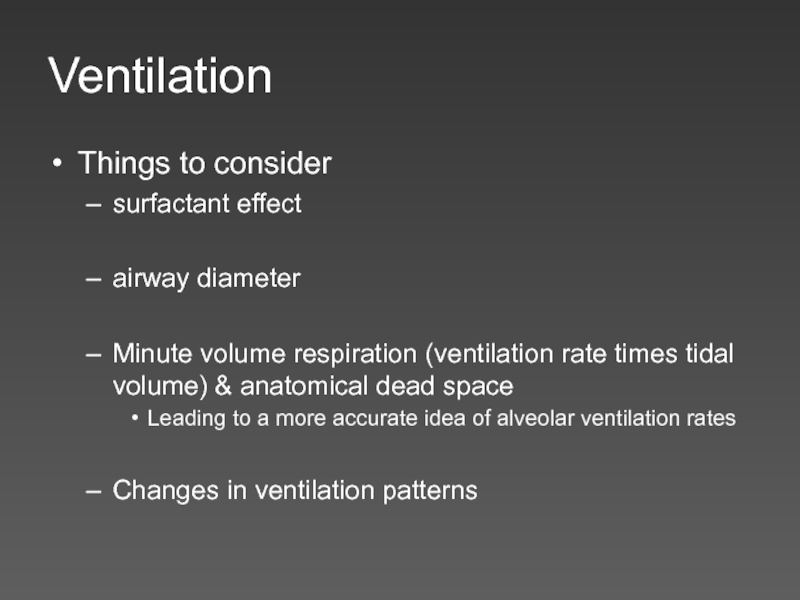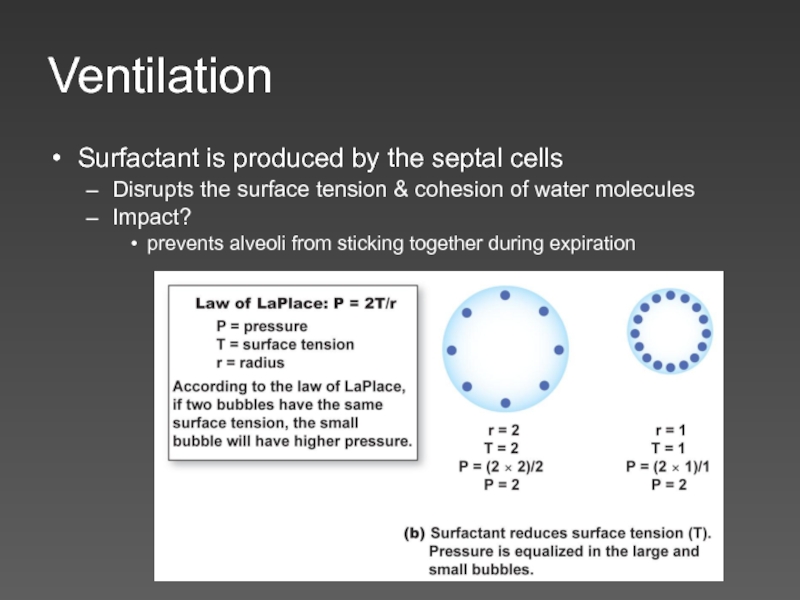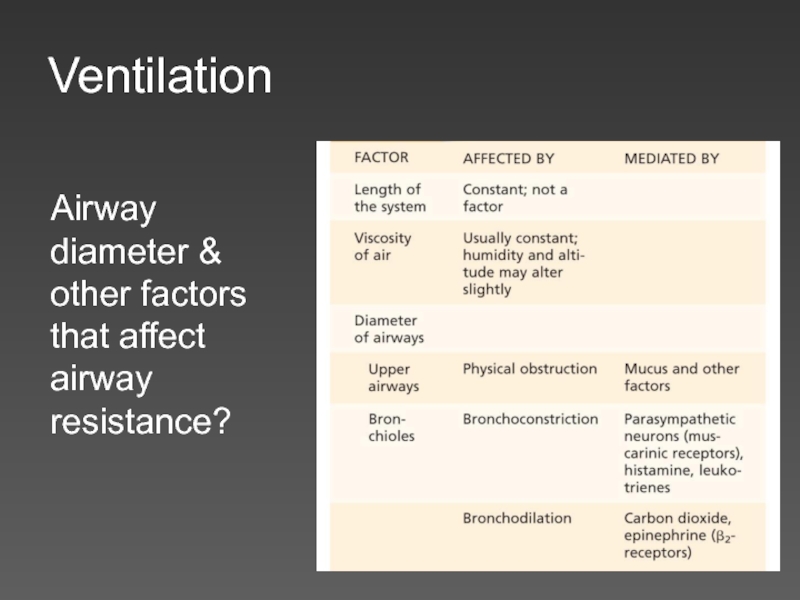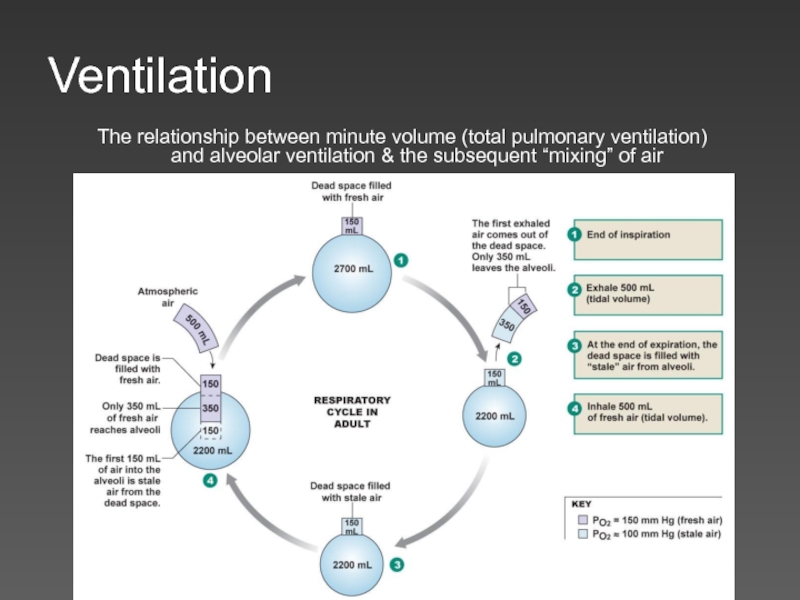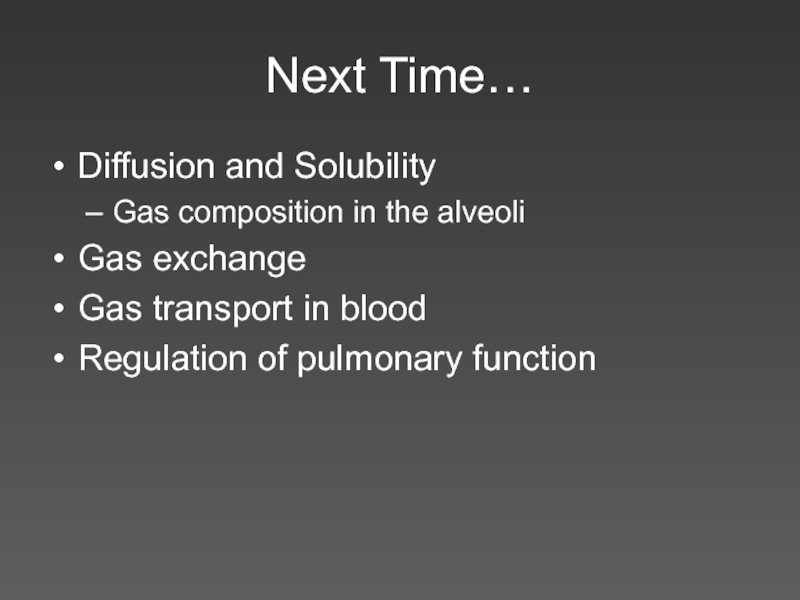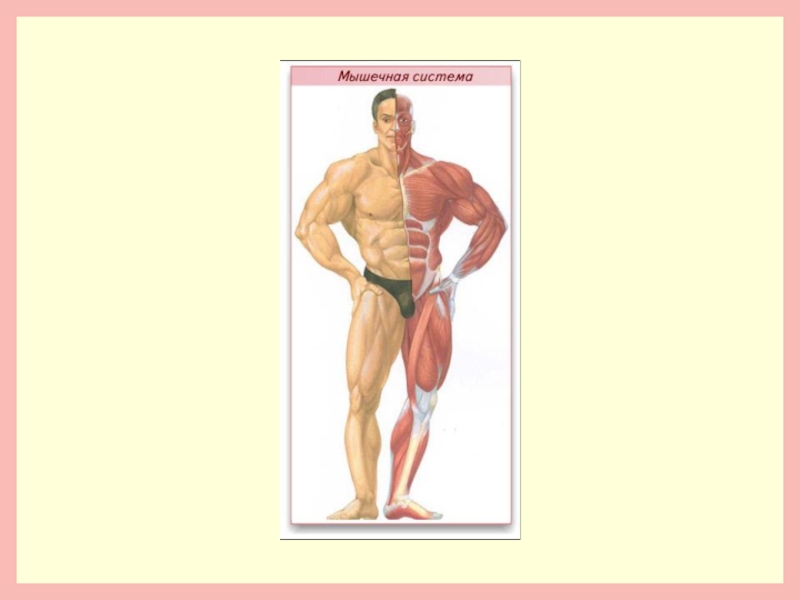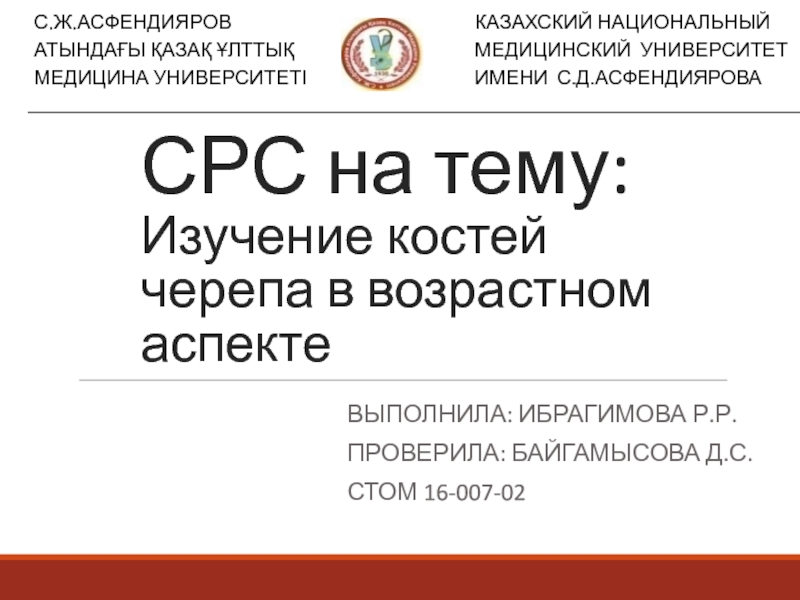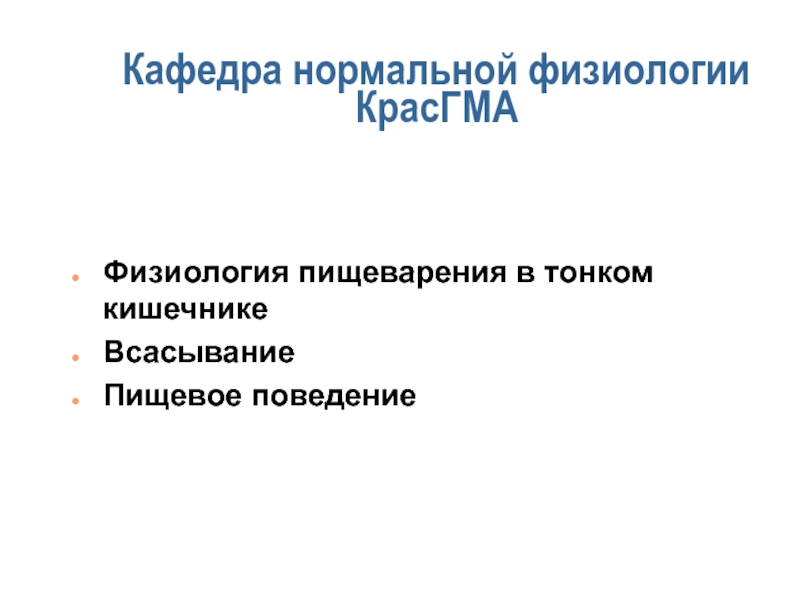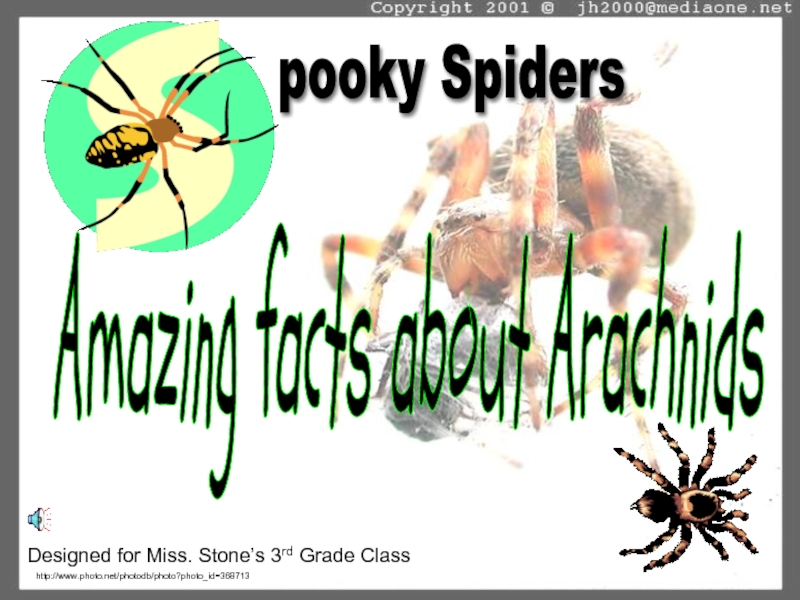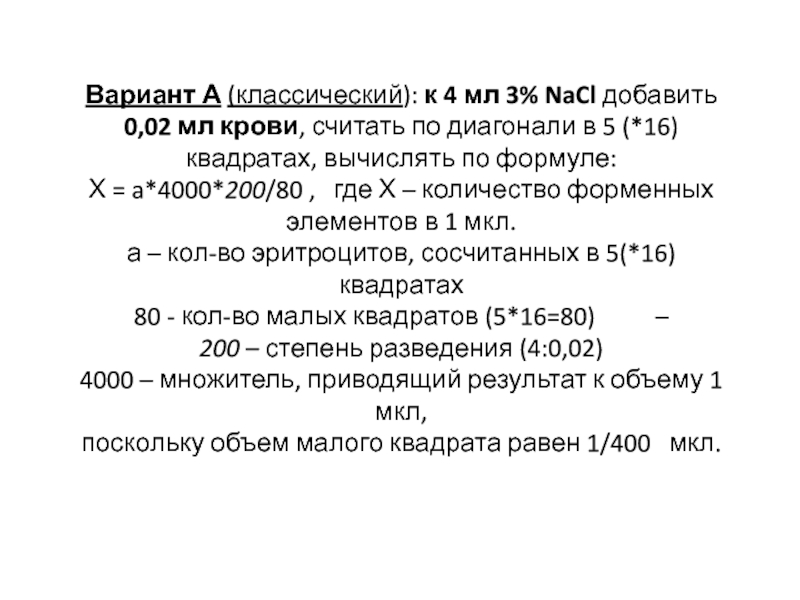- Главная
- Разное
- Дизайн
- Бизнес и предпринимательство
- Аналитика
- Образование
- Развлечения
- Красота и здоровье
- Финансы
- Государство
- Путешествия
- Спорт
- Недвижимость
- Армия
- Графика
- Культурология
- Еда и кулинария
- Лингвистика
- Английский язык
- Астрономия
- Алгебра
- Биология
- География
- Детские презентации
- Информатика
- История
- Литература
- Маркетинг
- Математика
- Медицина
- Менеджмент
- Музыка
- МХК
- Немецкий язык
- ОБЖ
- Обществознание
- Окружающий мир
- Педагогика
- Русский язык
- Технология
- Физика
- Философия
- Химия
- Шаблоны, картинки для презентаций
- Экология
- Экономика
- Юриспруденция
Respiratory physiology презентация
Содержание
- 1. Respiratory physiology
- 2. Lecture Outline Basics of the Respiratory System
- 3. Basics of the Respiratory System General Functions
- 4. Basics of the Respiratory System Respiration What
- 5. External Respiration Internal Respiration Schematic View of Respiration
- 6. Basics of the Respiratory System Functional Anatomy
- 7. Basics of the Respiratory System Functional Anatomy Bones, Muscles & Membranes
- 8. Basics of the Respiratory System Functional Anatomy
- 9. Basics of the Respiratory System Functional Anatomy
- 10. Basics of the Respiratory System Functional Anatomy
- 11. Basics of the Respiratory System Functional Anatomy
- 14. Basics of the Respiratory System Functional Anatomy
- 15. Basics of the Respiratory System Functional Anatomy
- 16. Basics of the Respiratory System Functional Anatomy
- 17. Basics of the Respiratory System Functional Anatomy Sum-up of functional anatomy Ventilation? Exchange? Vocalization? Protection?
- 18. Respiratory Physiology Gas Laws Basic Atmospheric conditions
- 19. Respiratory Physiology Gas Laws Dalton’s Law Law
- 20. Respiratory Physiology Gas Laws Fick’s Laws of
- 21. Respiratory Physiology Gas Laws Boyle’s Law Describes
- 22. Respiratory Physiology Gas Laws How does Boyle’s
- 23. Respiratory Physiology Gas Laws Ideal Gas law
- 24. Can’t forget about poor Charles and his
- 25. Ventilation Terminology Inspiration = the movement of
- 26. Ventilation Besides the diaphragm (only creates about
- 27. Ventilation What is the relationship between alveolar
- 28. Ventilation What are the different respiratory patterns?
- 29. Ventilation
- 30. Ventilation Inspiration Occurs as alveolar pressure drops
- 31. Ventilation Expiration Occurs as alveolar pressure elevates
- 32. Ventilation Both inspiration and expiration can be
- 33. Ventilation Things to consider surfactant effect
- 34. Ventilation Surfactant is produced by the septal
- 35. Ventilation Airway diameter & other factors that affect airway resistance?
- 36. Ventilation The relationship between minute volume (total
- 37. Next Time… Diffusion and Solubility Gas composition
Слайд 2Lecture Outline
Basics of the Respiratory System
Functions & functional anatomy
Gas Laws
Ventilation
Diffusion &
Gas Exchange
Lungs
Tissues
Gas Transport in Blood
Regulation of Ventilation & Impacts on
Gas levels, pH
Слайд 3Basics of the Respiratory System
General Functions
Exchange of gases
Directionality depends on gradients!
Atmosphere
Blood to tissues
Regulation of pH
Dependent on rate of CO2 release
Protection
Vocalization
Synthesis
Слайд 4Basics of the Respiratory System
Respiration
What is respiration?
Respiration = the series of
Step 1 = ventilation
Inspiration & expiration
Step 2 = exchange between alveoli (lungs) and pulmonary capillaries (blood)
Referred to as External Respiration
Step 3 = transport of gases in blood
Step 4 = exchange between blood and cells
Referred to as Internal Respiration
Cellular respiration = use of oxygen in ATP synthesis
Слайд 6Basics of the Respiratory System
Functional Anatomy
What structural aspects must be considered
The conduction portion
The exchange portion
The structures involved with ventilation
Skeletal & musculature
Pleural membranes
Neural pathways
All divided into
Upper respiratory tract
Entrance to larynx
Lower respiratory tract
Larynx to alveoli (trachea to lungs)
Слайд 8Basics of the Respiratory System
Functional Anatomy
Function of these Bones, Muscles &
Create and transmit a pressure gradient
Relying on
the attachments of the muscles to the ribs (and overlying tissues)
The attachment of the diaphragm to the base of the lungs and associated pleural membranes
The cohesion of the parietal pleural membrane to the visceral pleural membrane
Expansion & recoil of the lung and therefore alveoli with the movement of the overlying structures
Слайд 9Basics of the Respiratory System
Functional Anatomy
Pleural Membrane Detail
Cohesion between parietal and
Fluid (30 ml of fluid) creates an attraction between the two sheets of membrane
As the parietal membrane expands due to expansion of the thoracic cavity it “pulls” the visceral membrane with it
And then pulls the underlying structures which expand as well
Disruption of the integrity of the pleural membrane will result in a rapid equalization of pressure and loss of ventilation function = collapsed lung or pneumothorax
Слайд 10Basics of the Respiratory System
Functional Anatomy
The Respiratory Tree
connecting the external environment
similar to the vascular component
larger airway = higher flow & velocity
small cross-sectional area
smaller airway = lower flow & velocity
large cross-sectional area
Слайд 11Basics of the Respiratory System
Functional Anatomy
The Respiratory Tree
Upper respiratory tract is
The lower respiratory tract starts after the larynx and divides again and again…and again to eventually get to the smallest regions which form the exchange membranes
Trachea
Primary bronchi
Secondary bronchi
Tertiary bronchi
Bronchioles
Terminal bronchioles
Respiratory bronchioles with start of alveoli outpouches
Alveolar ducts with outpouchings of alveoli
conductive portion
exchange portion
Слайд 14Basics of the Respiratory System
Functional Anatomy
What is the function of the
Warm
Humidify
Filter
Vocalize
Raises incoming air to 37 Celsius
Raises incoming air to 100% humidity
Forms mucociliary escalator
Слайд 15Basics of the Respiratory System
Functional Anatomy
What is the function of the
Exchange of gases …. Due to
Huge surface area = 1x105 m2 of type I alveolar cells (simple squamous epithelium)
Associated network of pulmonary capillaries
80-90% of the space between alveoli is filled with blood in pulmonary capillary networks
Exchange distance is approx 1 um from alveoli to blood!
Protection
Free alveolar macrophages (dust cells)
Surfactant produced by type II alveolar cells (septal cells)
Слайд 16Basics of the Respiratory System
Functional Anatomy
Characteristics of exchange membrane
High volume of
Fast circulation through lungs
Pulmonary circulation = 5L/min through lungs….
Systemic circulation = 5L/min through entire body!
Blood pressure is low…
Means
Filtration is not a main theme here, we do not want a net loss of fluid into the lungs as rapidly as the systemic tissues
Any excess fluid is still returned via lymphatic system
Слайд 17Basics of the Respiratory System
Functional Anatomy
Sum-up of functional anatomy
Ventilation?
Exchange?
Vocalization?
Protection?
Слайд 18Respiratory Physiology
Gas Laws
Basic Atmospheric conditions
Pressure is typically measured in mm Hg
Atmospheric
Atmospheric components
Nitrogen = 78% of our atmosphere
Oxygen = 21% of our atmosphere
Carbon Dioxide = .033% of our atmosphere
Water vapor, krypton, argon, …. Make up the rest
A few laws to remember
Dalton’s law
Fick’s Laws of Diffusion
Boyle’s Law
Ideal Gas Law
Слайд 19Respiratory Physiology
Gas Laws
Dalton’s Law
Law of Partial Pressures
“each gas in a mixture
Or
The total pressure of a mixture of gases is equal to the sum of the individual gas pressures.
What does this mean in practical application?
If we know the total atmospheric pressure (760 mm Hg) and the relative abundances of gases (% of gases)
We can calculate individual gas effects!
Patm x % of gas in atmosphere = Partial pressure of any atmospheric gas
PO2 = 760mmHg x 21% (.21) = 160 mm Hg
Now that we know the partial pressures we know the gradients that will drive diffusion!
Слайд 20Respiratory Physiology
Gas Laws
Fick’s Laws of Diffusion
Things that affect rates of diffusion
Distance
Gradient sizes
Diffusing molecule sizes
Temperature
What is constant & therefore out of our realm of concern?
So it all comes down to partial pressure gradients of gases… determined by Dalton’s Law!
✓
✓
✓
✓
Слайд 21Respiratory Physiology
Gas Laws
Boyle’s Law
Describes the relationship between pressure and volume
“the pressure
P1V1 = P2V2
Слайд 22Respiratory Physiology
Gas Laws
How does Boyle’s Law work in us?
As the thoracic
If it goes below 760 mm Hg what happens?
As the thoracic cavity shrinks the volume must go down and pressure goes up
If it goes above 760 mm Hg what happens
Слайд 23Respiratory Physiology
Gas Laws
Ideal Gas law
The pressure and volume of a container
PV = nRT
n = moles of gas
T = absolute temp
R = universal gas constant @ 8.3145 J/K·mol
Do we care?
Слайд 24Can’t forget about poor Charles and his law or Henry and
Aptly named … Charles’s Law & Henry’s Law
Respiratory Physiology
Gas Laws
As the temp goes up in a volume of gas the volume rises proportionately
V∝T
At a constant temperature, the amount of a given gas dissolved in a given type and volume of liquid is directly proportional to the partial pressure of that gas in equilibrium with that liquid.
OR
the solubility of a gas in a liquid at a particular temperature is proportional to the pressure of that gas above the liquid.
*also has a constant which is different for each gas
Слайд 25Ventilation
Terminology
Inspiration = the movement of air into the respiratory tracts (upper
Expiration = movement of air out of the respiratory tracts
Respiratory cycle is one inspiration followed by an expiration
Cause of Inspiration?
Biological answer
Contraction of the inspiratory muscles causes an increase in the thoracic cavity size, thus allowing air to enter the respiratory tract
Physics answer
As the volume in the thoracic cavity increases (due to inspiratory muscle action) the pressure within the respiratory tract drops below atmospheric pressure, creating a pressure gradient which causes molecular movement to favor moving into the respiratory tract
Cause of Expiration?
Слайд 26Ventilation
Besides the diaphragm (only creates about 60-75% of the volume change)
Слайд 27Ventilation
What is the relationship between alveolar pressure and intrapleural pressure and
Слайд 28Ventilation
What are the different respiratory patterns?
Quiet breathing (relaxed)
Forced inspirations & expirations
Respiratory
Слайд 30Ventilation
Inspiration
Occurs as alveolar pressure drops below atmospheric pressure
For convenience atmospheric pressure
A (-) value then indicates pressure below atmospheric P
A (+) value indicates pressure above atmospheric P
At the start of inspiration (time = 0),
atmospheric pressure = alveolar pressure
No net movement of gases!
At time 0 to 2 seconds
Expansion of thoracic cage and corresponding pleural membranes and lung tissue causes alveolar pressure to drop to -1 mm Hg
Air enters the lungs down the partial pressure gradient
Слайд 31Ventilation
Expiration
Occurs as alveolar pressure elevates above atmospheric pressure due to a
At time 2-4 seconds
Inspiratory muscles relax, elastic tissue of corresponding structures initiates a recoil back to resting state
This decreases volume and correspondingly increases alveolar pressure to 1 mm Hg
This is above atmospheric pressure, causing…?
At time 4 seconds
Atmospheric pressure once again equals alveolar pressure and there is no net movement
Слайд 32Ventilation
Both inspiration and expiration can be modified
Forced or active inspiration
Forced or
The larger and quicker the expansion of the thoracic cavity, the larger the gradient and
The faster air moves down its pressure gradient
Слайд 33Ventilation
Things to consider
surfactant effect
airway diameter
Minute volume respiration (ventilation rate times tidal
Leading to a more accurate idea of alveolar ventilation rates
Changes in ventilation patterns
Слайд 34Ventilation
Surfactant is produced by the septal cells
Disrupts the surface tension &
Impact?
prevents alveoli from sticking together during expiration
Слайд 36Ventilation
The relationship between minute volume (total pulmonary ventilation) and alveolar ventilation
Слайд 37Next Time…
Diffusion and Solubility
Gas composition in the alveoli
Gas exchange
Gas transport in
Regulation of pulmonary function
